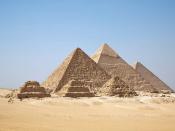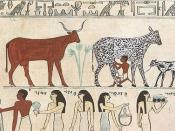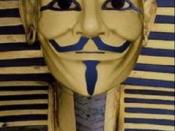Egyptian Burial Rituals
The earliest ancient Egyptians buried their dead in small pits in the desert. The heat and dryness of the sand dehydrated the bodies quickly, creating lifelike and natural mummies. Later, the ancient Egyptians began burying their dead in coffins to protect them from wild animals in the desert. However, they realized that bodies placed in coffins decayed when they were not exposed to the hot, dry sand of the desert. Over many centuries, the ancient Egyptians developed a method of preserving bodies so they would remain lifelike. The process included embalming the bodies and wrapping them in strips of linen. Today we call this process mummification. The process of mummification has two stages. First, the embalming of the body takes place. Then, the wrapping and burial of the body follow. First, his body is taken to the tent known as ibu or the place of purification. There they wash the body with good smelling palm wine and rinse it with water from the Nile.
One of the embalmer's men makes a cut in the left side of the body and removes many of the internal organs. The heart is not taken out of the body because it is the center of intelligence and feeling and the man will need in their afterlife. A long hook is used to smash the brain and pull it through the nose. Then the dehydrated internal organs are wrapped and in linen and returned to the body. The body is stuffed with dry materials to allow it to return lifelike form. In the past the internal organs are placed in a hollow canopic and the god Osiris is painted on the surface of the jar. Finally, a large cloth is wrapped around the entire mummy. The funeral is held for the deceased...



Fairly Good
Hey--
This essay was pretty good, but there were a few grammatical errors that you might want to correct. Pretty good content for a brief overview, which is what this was. You probably could have rearranged some of the sentence structure and wording to make it sound better, but, overall, you did a fairly good job.
3 out of 3 people found this comment useful.